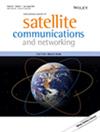深入了解互操作性及其对 LunaNet 通信和导航服务的影响
IF 1.6
4区 计算机科学
Q3 ENGINEERING, AEROSPACE
International Journal of Satellite Communications and Networking
Pub Date : 2024-08-13
DOI:10.1002/sat.1531
引用次数: 0
摘要
摘要美国国家航空航天局(NASA)正在开发的阿耳特弥斯(Artemis)计划正在推进人类重返月球的能力,并在国际和商业合作伙伴的广泛参与下建立一个初始基地营和相关基础设施。在规划半月形探索和科学任务时,各航天机构正在合作启用通信、网络以及定位、导航和定时(PNT)系统,即 "月球网",以交换信息并为半月形航天器和空间系统提供服务,从而帮助彼此实现共同目标。为了实现共性和降低成本,实现互惠互利,目前正在采取互操作性战略,以帮助将所有部件组装在一起并顺利运作。促进互操作性应有利于月球任务,因为它提供了在类似于地面互联网的协作环境中运行的能力。互操作性使他们能够共享信息,在无线电频率日益拥挤的情况下安全导航,并遵循共同的流程和程序进行有效的联合行动。与以往由政府主导的工作不同,这一生态系统预计将包括营利(商业)企业、非营利组织和学术机构等积极的利益相关者,并使他们从中受益。最终目标是建立一个由服务提供商和用户组成的半月形生态系统,使其能够为实现任务目标贡献和/或利用基础设施和能力,这些任务目标涵盖人类的所有活动,同时支持各种商业模式。随着系统在技术、标准、组件和用户应用方面的不断发展,这种方法使系统之系统(SoS)(如网络之网络)在 LunaNet 生态系统的背景下具有可持续性。本文报告了为帮助制定国际 LunaNet 体系结构而开展的一项工作的结果,该工作提供了一个足以满足这些需求的互操作性标准定义,研究了该定义在体系结构和操作方面的影响,并探讨了部署和发展为半月探测和科学任务提供的服务的互操作性战略和策略。本文章由计算机程序翻译,如有差异,请以英文原文为准。
Deeper dive into interoperability and its implications for LunaNet communications and navigation services
SummaryThe Artemis program being developed by the United States' (US) National Aeronautics and Space Administration (NASA) is advancing capabilities to return humans to the Moon and establish an initial base camp and associated infrastructure with extensive contributions from international and commercial partners. In planning for cislunar exploration and science missions, space agencies are collaborating to enable communications, networking, and Positioning, Navigation, and Timing (PNT) systems—called LunaNet—to exchange information and provide services to cislunar spacecraft and space systems, thus helping each other to achieve their shared goals. To achieve commonality and lower cost for mutual benefit, the strategy of interoperability is being adopted to help fit all the pieces together and function smoothly. Facilitating interoperability should benefit lunar missions by providing the ability to operate in a collaborative environment similar to the terrestrial Internet. Interoperability allows them to share information, navigate safely despite increasing radio frequency congestion, and follow common processes and procedures for effective joint operations. Unlike prior government‐dominated efforts, this ecosystem is expected to include and benefit for‐profit (commercial) businesses, non‐profit organizations, and academic institutions as active stakeholders. Ultimately, the goal is to enable a cislunar ecosystem of service providers and users to contribute to and/or utilize infrastructure and capabilities to achieve mission objectives that span the full range of human endeavors while supporting a variety of business models. This approach enables a Systems of Systems (SoS), such as a Network of Networks, to be sustainable in the context of the LunaNet ecosystem as systems evolve over time in technologies, standards, components, and user applications. This paper reports on the results of an effort to help frame the development of the international LunaNet architecture by providing a canonical definition of interoperability broad enough to meet these needs, examining architectural and operational implications of the definition, and exploring interoperability strategies and tactics to deploy and evolve the services proposed for cislunar exploration and science missions.
求助全文
通过发布文献求助,成功后即可免费获取论文全文。
去求助
来源期刊
CiteScore
4.10
自引率
5.90%
发文量
31
审稿时长
>12 weeks
期刊介绍:
The journal covers all aspects of the theory, practice and operation of satellite systems and networks. Papers must address some aspect of satellite systems or their applications. Topics covered include:
-Satellite communication and broadcast systems-
Satellite navigation and positioning systems-
Satellite networks and networking-
Hybrid systems-
Equipment-earth stations/terminals, payloads, launchers and components-
Description of new systems, operations and trials-
Planning and operations-
Performance analysis-
Interoperability-
Propagation and interference-
Enabling technologies-coding/modulation/signal processing, etc.-
Mobile/Broadcast/Navigation/fixed services-
Service provision, marketing, economics and business aspects-
Standards and regulation-
Network protocols

 求助内容:
求助内容: 应助结果提醒方式:
应助结果提醒方式:


